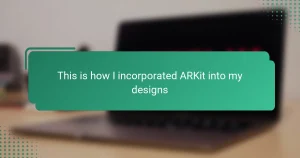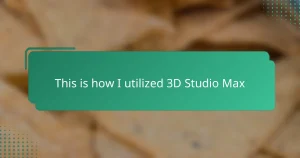Key takeaways
- Science fiction props not only enhance visual storytelling but also inspire creativity and design exploration.
- Blender is a versatile tool for prop design, combining modeling, sculpting, and texturing, along with a supportive community and extensive tutorials.
- Effective prop creation involves blocking basic shapes, refining details with modifiers, and adding personality through unique textures and lighting.
- Optimizing workflow in Blender through custom shortcuts and organized scenes significantly enhances the creation process for sci-fi props.

Introduction to science fiction props
Science fiction props have always fascinated me because they bring imaginary worlds to life. They’re not just objects; they tell stories that spark curiosity and wonder about what the future or distant galaxies might hold. Have you ever noticed how a single prop can make a sci-fi scene feel authentic and immersive?
From sleek gadgets to rugged space gear, these props shape the visual language of science fiction. I find it thrilling how designers blend creativity with a sense of plausibility, crafting pieces that look both believable and otherworldly. It’s like stepping into a parallel universe through tangible art.
What makes sci-fi props truly special is their power to inspire. When I first encountered a model spaceship in a movie, it sparked my imagination and pushed me to explore design and storytelling in new ways. That emotional connection is what keeps the sci-fi prop community alive and buzzing with ideas.

Overview of Blender for prop design
Blender quickly became my go-to tool for designing sci-fi props because of its versatility and accessibility. I loved how it combined modeling, sculpting, and texturing all in one program, which saved me from juggling multiple apps. Have you tried tweaking a 3D model and instantly seeing how light interacts with its surface? That instant feedback feels like magic.
What really impressed me was Blender’s powerful yet intuitive interface. At first, it felt a bit overwhelming, but once I got the hang of it, I found myself experimenting with shapes and details I hadn’t imagined possible. It’s like having an entire creative workshop right on my computer screen, ready to bring wild, futuristic ideas to life.
One thing I appreciate deeply is Blender’s active community and countless tutorials, which kept me motivated when I hit design roadblocks. Knowing that others were sharing tips and pushing the same creative boundaries made the learning curve less daunting. Would I have kept going without that support? Probably not. Blender is not just software; it’s a gateway to realizing sci-fi dreams.
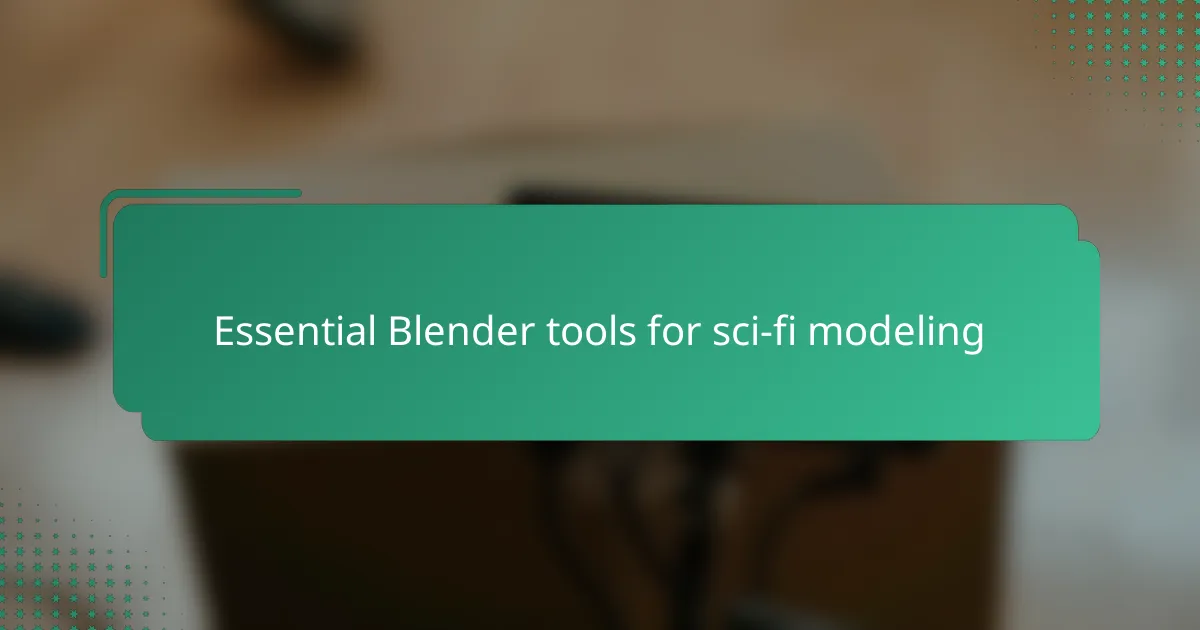
Essential Blender tools for sci-fi modeling
When I first dived into sci-fi modeling with Blender, the Modifiers tab became my trusty ally. Tools like Bevel and Subdivision Surface helped me add complexity without losing control, making hard edges look sleek and surfaces smooth. Have you ever felt stuck trying to create intricate details? Modifiers let you experiment non-destructively, which felt like a creative safety net for me.
Another favorite is Blender’s Sculpt Mode, which added a tactile dimension to my designs. Instead of just moving vertices around, I could shape organic curves or battle-worn textures with brushes—something that made my props feel lived-in and believable. It surprised me how blending digital sculpting into hard-surface modeling opened up entirely new possibilities for making sci-fi gear feel authentic.
And let’s not forget the Shader Editor, where materials and lighting come alive. Playing with metallic finishes, glowing panels, or worn-down textures was thrilling—I could instantly see how color and light changed the mood of a prop. Isn’t it fascinating how a subtle tweak in material settings can turn a simple shape into a futuristic gadget that tells a story? That’s where the magic of Blender truly shines for me.
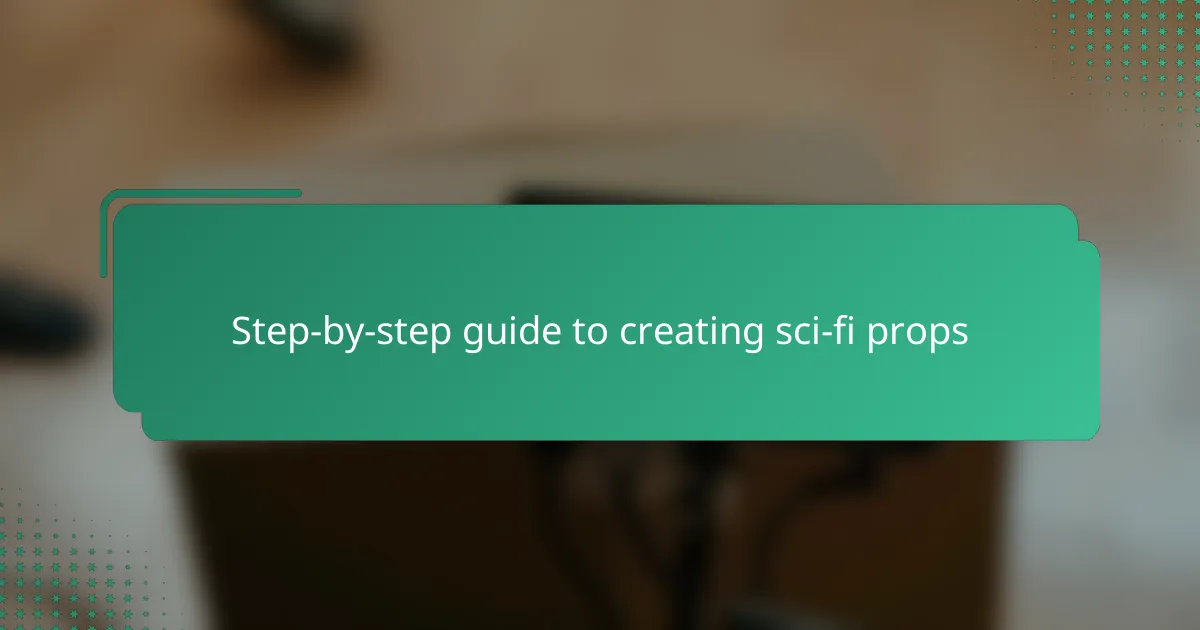
Step-by-step guide to creating sci-fi props
The first step I always take is blocking out the basic shape of the prop using simple geometry. It’s incredible how starting with rough forms lets me focus on the overall silhouette before diving into details—do you ever find that the shape sets the whole tone of your design? For me, this stage is like laying down the foundation of a story, where every curve hints at the function or history of the object.
Next, I move to refining and adding detail by applying modifiers and sculpting textures. This is where the prop really begins to feel alive, almost like uncovering the secrets of a futuristic tool. I remember once spending hours experimenting with the Bevel modifier to get just the right edge sharpness—it was frustrating but rewarding when the shape suddenly popped with that sleek, sci-fi feel.
Finally, there’s the fun part: texturing and lighting in Blender’s Shader Editor. Adjusting materials to create glowing panels or weathered metal gave my props personality and authenticity. Have you noticed how a subtle glow or a scratch can transform a cold model into a believable artifact from another world? It’s those finishing touches that turn a digital shape into a story you want to hold.
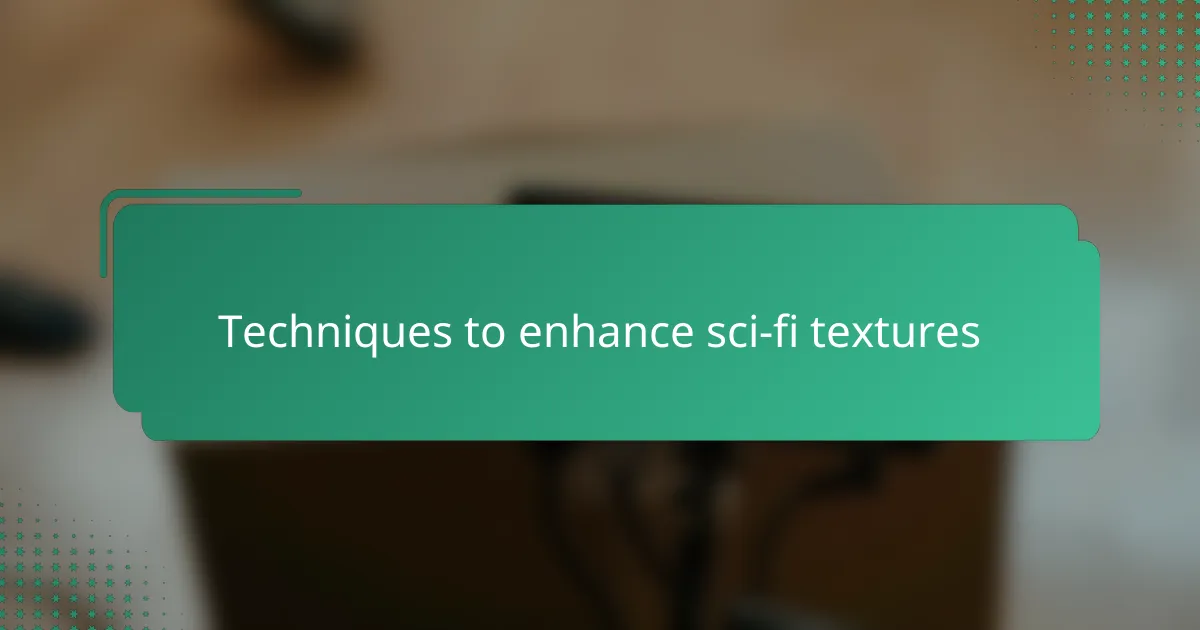
Techniques to enhance sci-fi textures
One technique I found incredibly helpful for enhancing sci-fi textures is using layered procedural textures in Blender. By combining noise patterns, scratches, and metallic sheens, I can simulate complex surfaces without relying solely on image files. Have you ever noticed how subtle variations in texture make a prop feel like it has a history, as if it’s been through countless space missions? That’s exactly the effect layering textures can give you—a rich, believable narrative embedded in the surface itself.
Another approach that changed how I work is baking ambient occlusion and curvature maps to drive texture details. This process accentuates edges and crevices, making worn-out panels or chipped paint stand out more vividly. I remember the first time I saw these baked details on my sci-fi rifle model—it was like breathing life into plastic. It made the prop feel tangible, something you could almost pick up and inspect.
Don’t underestimate the power of hand-painted details either. I often switch between procedural methods and manually painting small elements like scorch marks or circuitry lines using Blender’s texture paint mode. It’s a bit like doodling on a spaceship, but those personal touches add layers of story that algorithms alone can’t replicate. Have you tried painting directly onto a 3D model? It’s surprisingly satisfying—like leaving a signature on your work, one pixel at a time.
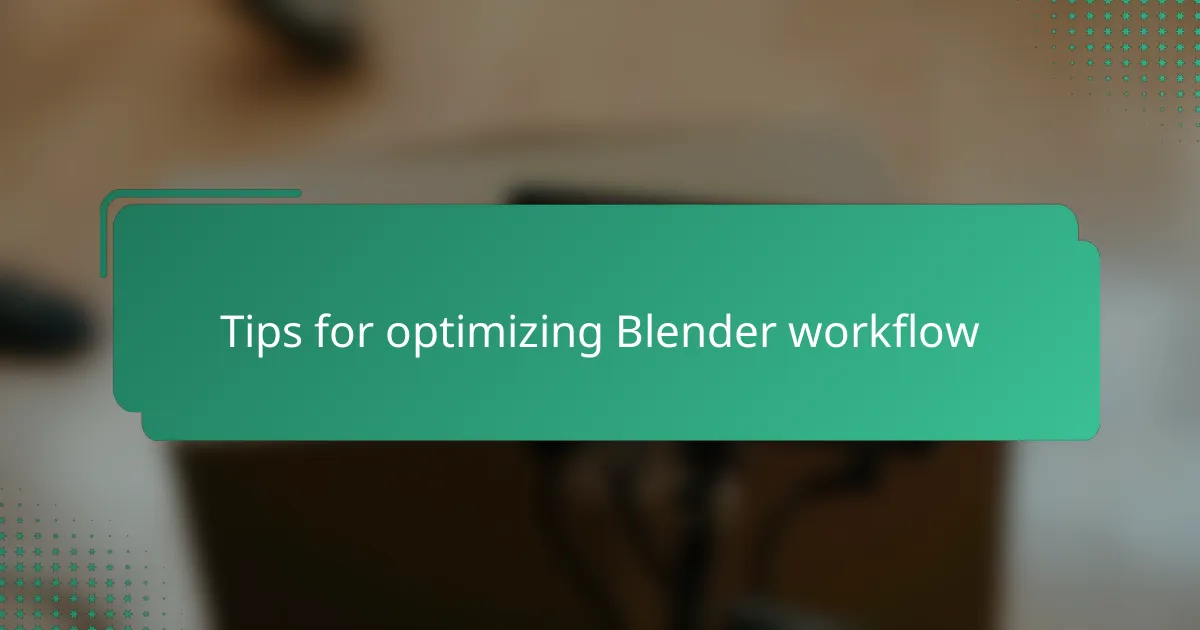
Tips for optimizing Blender workflow
Working efficiently in Blender made all the difference in my sci-fi prop projects. I quickly realized that customizing keyboard shortcuts to fit my personal habits wasn’t just a convenience—it actually sped up my workflow dramatically. Have you ever tried juggling multiple menus just to perform a simple action? Tailoring shortcuts helped me stay in the creative zone without constant interruptions.
Another tip that changed how I work is organizing my scenes with collections and naming conventions. Early on, my Blender files would become cluttered, and finding the right asset felt like searching for a needle in a haystack. Setting up clear hierarchies and labeling objects saved me from that frustration and kept my focus on designing rather than hunting through layers.
Lastly, I can’t overstate how helpful it is to use viewport shading modes strategically. Switching between solid, wireframe, and rendered views helped me catch mistakes early and visualize details better. Do you sometimes get lost in endless polygons and miss flaws? Using these shading modes like checkpoints gave me much-needed clarity and confidence throughout the modeling journey.

My personal experience with Blender props
When I first started creating sci-fi props in Blender, I was amazed at how quickly my ideas began to take shape. There was this moment when a vague sketch in my mind suddenly became a detailed 3D model right before my eyes—I still remember that thrill of watching curves and edges form like magic. Have you ever felt that rush when a tool just “clicks” with your creativity? That’s exactly what Blender did for me.
Throughout my projects, I often encountered challenges that tested my patience, especially when complex details refused to look right. But each obstacle taught me something new about the software and myself. For example, learning to balance between sculpting and modifiers felt like mastering an art form, blending precision with freedom. It made me appreciate how much personal growth happens alongside technical skill.
What continues to inspire me is the versatility Blender offers in crafting props that tell a story—not just visually, but emotionally. When I texture a weathered panel or add faint glowing elements, I think about the prop’s history and context, imagining the sci-fi world it belongs to. Isn’t it fascinating how a digital object can evoke a sense of place and time? That connection keeps me returning to Blender, eager to build the next piece of that imaginary universe.

